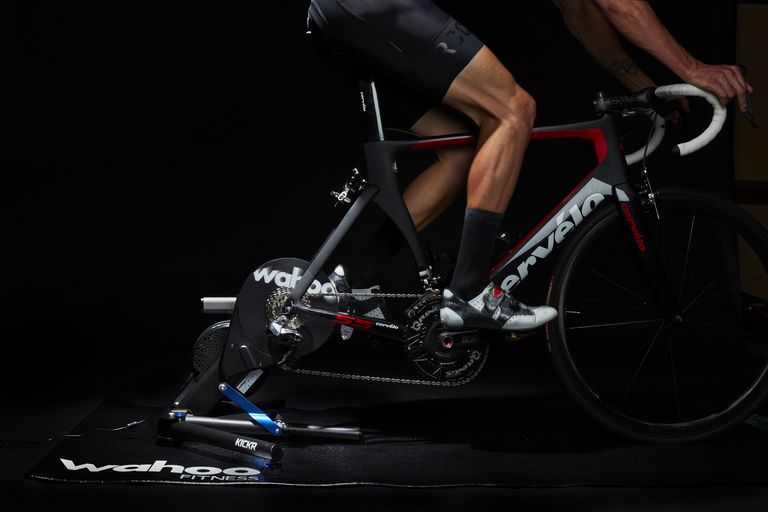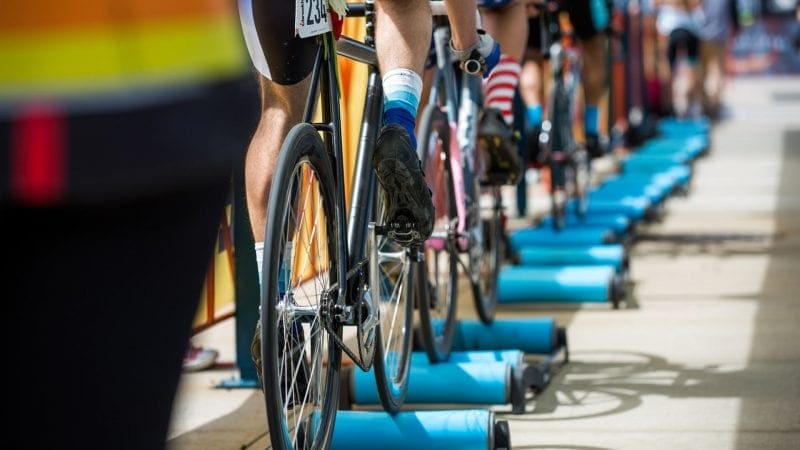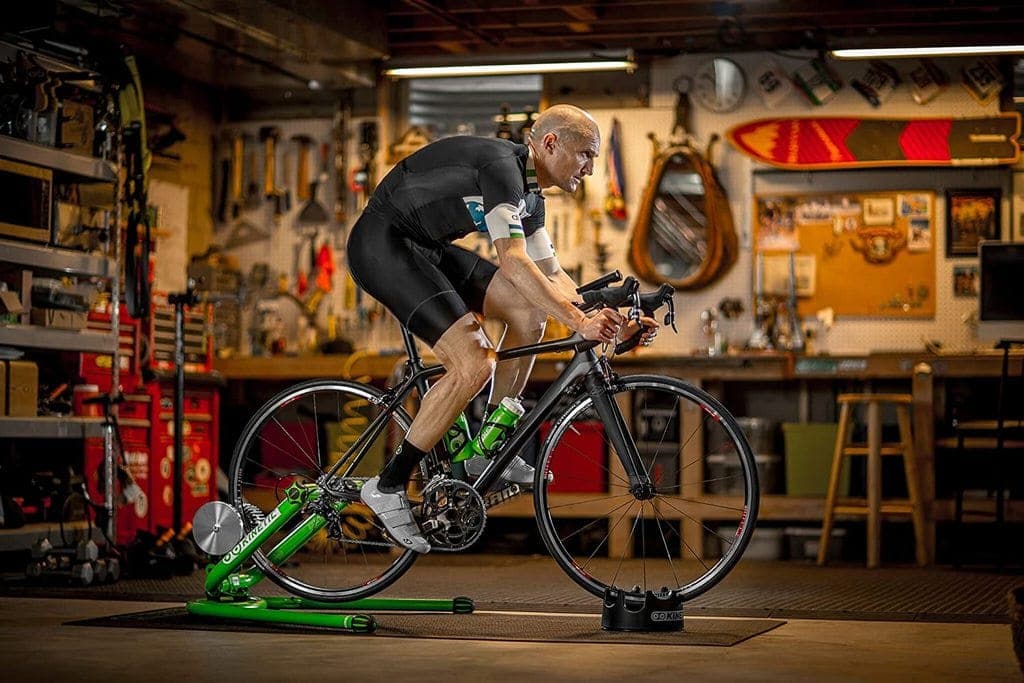Accessories-Info, Electronics-Info, Tips -
10 Common Indoor Bike Trainer Mistakes to Avoid
Indoor bike training is an essential part of a cyclist’s season.
It allows you to ride in all weathers, get the miles in over a cold or wet winter, and provides the means to practice intervals or perform an FTP test in safety.
All great reasons to use an indoor bike trainer.
Read More :
Few cyclists actively look forward to indoor training but it is a valuable way to maintain form when the weather is bad or when you don’t have time for a proper ride.
As we don’t like them much, we don’t give indoor training the thought and respect it deserves and can make some rookie errors when using one.
Here are 10 common indoor bike trainer mistakes to avoid.
1. Not Setting A Goal
Riding indoors is goal-oriented, just like riding outdoors.
Even if getting some miles in is your goal, it needs to be a tangible one.
Set a specific time limit, a specific mileage limit, a calorie limit, or another goal for your session. You will find that it is too easy to get bored, lose motivation and quit early, so a plan is essential.
Indoor bike trainer sessions are usually much shorter than outside sessions.
Coaches know all too well how boring indoor training can be, so recommend HIIT sessions, intervals, and shorter structured training rides. Even the best-motivated rider will soon bore of staring at the same four walls during a session, so set your goals accordingly.
2. Not Doing A Structured Workout
Indoor bike trainer sessions are the perfect opportunity to do a structured workout.
If you live in a busy city, hilly region, or somewhere with extreme temperatures, individual workouts on the road can be very impractical. Using an indoor trainer for intervals, fasted rides, FTP tests, or even recovery rides can seriously improve your form.
You have no road safety concerns, no traffic to contend with, no traffic lights, no hills, junctions, other riders, or any of the obstructions and distractions we have outdoors. That’s the perfect time for hardcore training.
Suppose your indoor trainer is smart and has a power meter, all the better. Use a power meter together with a heart rate monitor.
You can use power to train just like you would on the road. Power train, train your VO2Max or endurance or whatever you need.
3. Going Hard All the Time
On some roads, with some groups and in some situations, you cannot help but go hard.
It could be the terrain, the race pace, time limit, or whatever, but we all know that we tend to push too hard when we don’t concentrate.
An indoor trainer is a perfect opportunity to take it easy. To train Zone 2 or do a recovery ride. To take it easy and ride at 50% for a while.
Don’t think that just because you’re on a bike, albeit an indoor one, that you have to go full bore. You don’t, and doing so wastes a perfect opportunity for a different kind of ride.
The pros and their coaches recommend recovery rides for all manner of reasons. Having to train indoors is the ideal opportunity to have a recovery ride without feeling that you’re missing out on what could otherwise be a typical Sunday ride with the bunch.
4. Not Warming Up and Cooling Down
A proper warm-up and warm-down are essential for any strenuous physical activity, whether it’s indoors or outdoors. There is a temptation to leap onto your bike trainer, clip-in, set up your pain cave, and hit it hard and fast.
Don’t.
An indoor bike trainer is a perfect place to perfect warmups and warm downs as there is no traffic or terrain to spoil your timing.
Use it.
A warmup and warm down is just as important on a low impact endurance ride as it is on a HIIT session. If you use Zwift or other software, a warm-up and warm-down will be built in.
If you use a WattBike, Tacx, TrainerRoad, Sufferfest, or something else, all of their workouts will include a warm-up and warm down. If your session doesn’t have them, make time for them before and after.
Don’t forget to use a foam roller to loosen the tight muscles after a hard indoor session!
5. Not Fuelling Correctly
Fuelling and hydration are actually more important on an indoor trainer than when riding outdoors.
The indoor sessions can be more intense. Because many turbo trainers or training programs don’t allow for freewheeling, there are no cake stops or even short stops for traffic or for others to catch up.
You need to fuel appropriately for your session.
Heat is also an issue with indoor training. Unless you have a cold room, large fan, or take it outside, you’re going to be running hotter than usual. This makes proper hydration even more important.
You will be sweating more and your body will have to work much harder to radiate heat. All this requires more hydration than usual.
6. Neglecting Noise Levels
Indoor bike trainers are noisy. Even the quietest one in the market like the Tacx Neo still generate some sound, albeit relatively quieter than its competitors.
You need to bear this in mind when figuring out where to put your indoor bike trainer.
Put it somewhere you won’t be disturbed and where you won’t disturb others. Consider how much noise it produces, how it travels in your home. If you live in an apartment, the noise could sometimes be heard by your neighbors upstairs or downstairs as well.
Use a trainer mat to lessen vibration and place it somewhere it will disturb other people the least. If you have a garage, use it.
If you have a room at the back of the house where nobody goes, use that. Nothing will spoil a turbo session faster than a partner’s complaints or neighbors hammering on the wall!
7. Sprinting Out of the saddle
Depending on what turbo trainer you have, you may not be able to perform out of the saddle sprints like you’re used to.
Some trainers like the Kinetic Rock and Roll will allow you to move from side to side as if you were sprinting.
Some exercise bikes like the Wattbike are large and robust enough to cope without the saddle efforts. Keep in mind that most indoor trainers don’t fare so well with riding out of the saddle.
Good sprint form keeps your body still while moving the bike from side to side. Most indoor bike trainers cannot cope with that. Even Kinetic Rock and Roll has limited lateral movement, so you have to be mindful.
Out of the saddle, efforts can place excess stress on the trainer itself, on your bike frame as it tries to flex in directions it shouldn’t while held in place, and on your body as it is used to having free movement in most directions when sprinting.
Sprints are still possible on an indoor trainer but should remain seated if you don’t use a trainer built to cope with it.
A bike roller will be a better option if you want to make sprint or out of saddle training indoors.
8. Not Using A Fan
Not using a fan is one of the most common rookie mistakes there is and one I have seen many times.
We are so used to feeling the wind in our faces and feeling the air’s cooling effect as we radiate heat that we can forget that we won’t have that indoors. Every indoor training session should have a fan running regardless of the temperature and intensity of the workout.
Using a fan feels nice, keeps the air moving, stops the room from smelling of sweat, and helps your body radiate heat. Even if it feels cool in your pain cave, have that fan running even if on a low setting. The more effective your body can dump heat, the more efficiently it can perform.
Plus, if you close your eyes and use your imagination, you can daydream that you’re actually out on the road and not stuck indoors on a trainer!
9. Not Listening to Music or Watching Something
Music is a powerful motivator, as I’m sure you already know.
The indoor training session is very boring as I’m sure you will soon figure it out.
Put on a headphone and listening to music can offset that boredom by a considerable degree. Many psychological tests have been performed on athletes who use music for training, and most of them found that either the perception of effort was less or performance increased. The amount depends on the type of music, but even the mildest music can affect.
The same for using apps like Zwift or even Netflix. They act as a distraction from the repetitive nature of indoor training, and as long as you can keep half an eye on your data and the session’s goal, there is nothing wrong with watching something else.
I often use YouTube videos of rides when on the indoor trainer. With music playing in the background and watching a rider’s video climbing Sa Calobra in the sunshine, I quickly forget the dampness and cold outside and enjoy the scenery.
Read More : The 8 Best Headphones for Cycling
10. Wearing Your Best Kit
If your best kit is your most comfortable, then, by all means, wear it.
If you’re wearing it for the sake of wearing it indoors, don’t.
Nobody cares what you look like while indoors. Whatever you’re wearing, you’re going to be hot, red in the face, and sweaty, and wearing your pro kit isn’t going to make you look any better.
Indoors is where all my old or last season kit goes to get a second chance. It is comfortable and worn in and works perfectly on an indoor trainer. You sweat a whole lot more when on the turbo, and it’s always nice to soak your old kit rather than your best!
Summing Things Up
An indoor session is not the most pleasant experience and probably the one time where every cyclist suffers for their sport. However, the benefits of indoor trainers training far outweigh the costs, and if you have one and have space for one, they are a valuable tool in our arsenal.
Whether it’s to maintain form through winter, prevent having to waste good weather in spring, regain fitness, train for a specific event, or perform the exercise you cannot do on the road, nothing beats an indoor trainer for flexibility and effectiveness.
If you’re new to indoor training, if you have read this list of indoor bike trainer mistakes that people make, you should hopefully be able to hit the ground running and make the most of your time.
Author Recommended Reads



